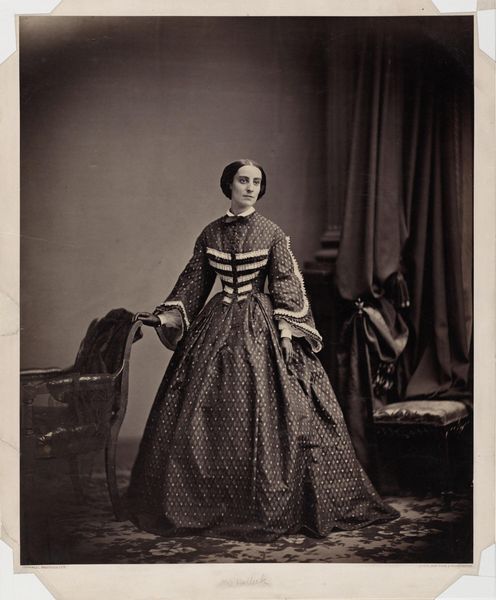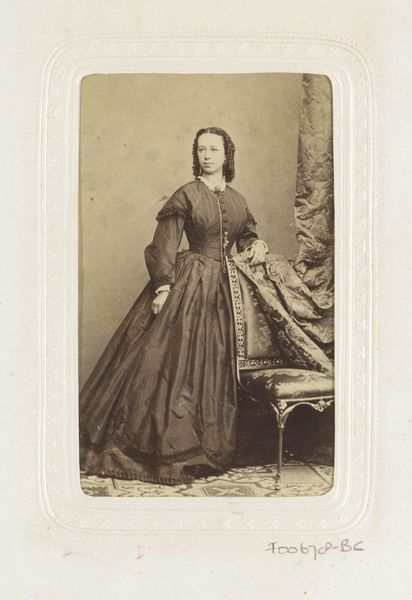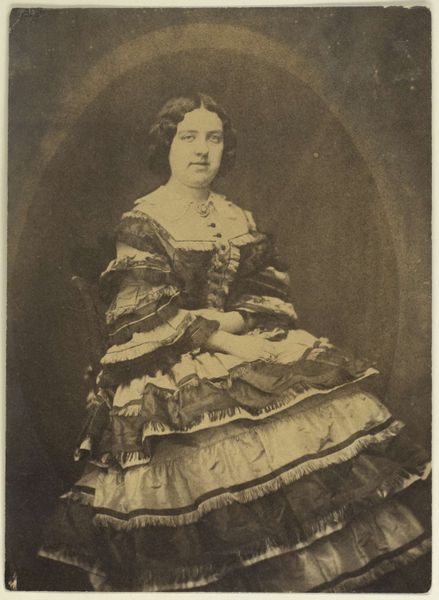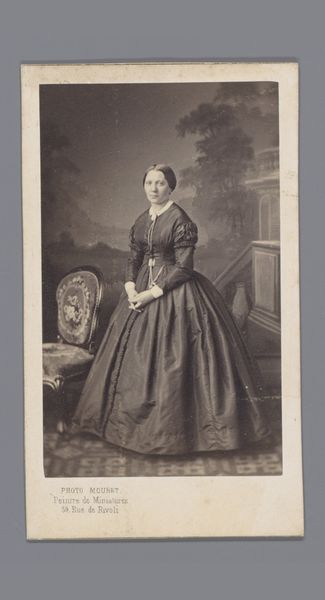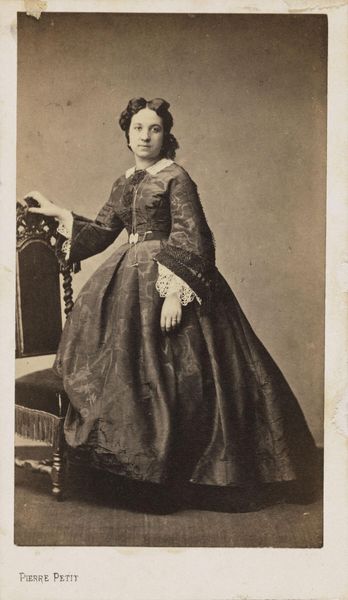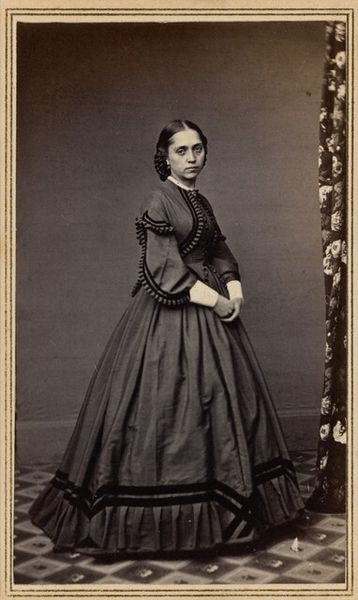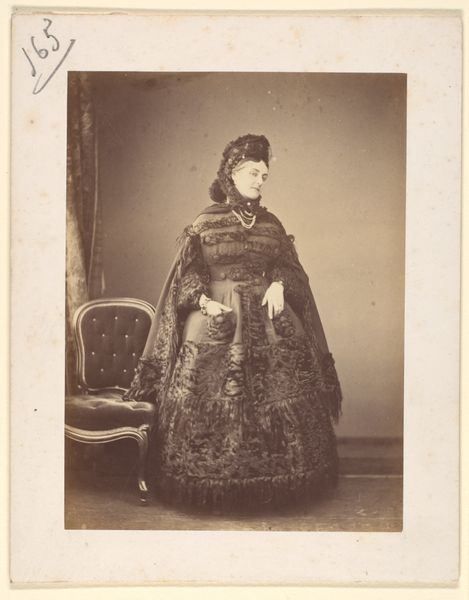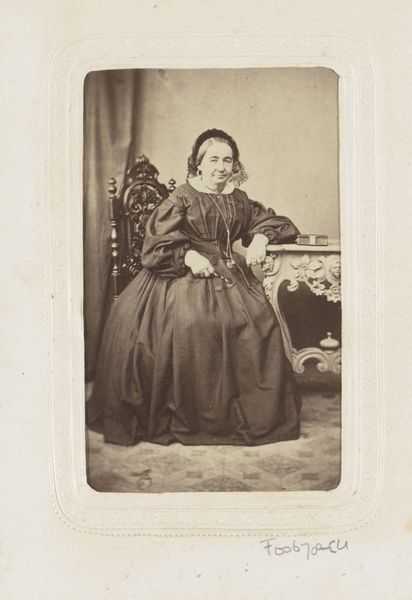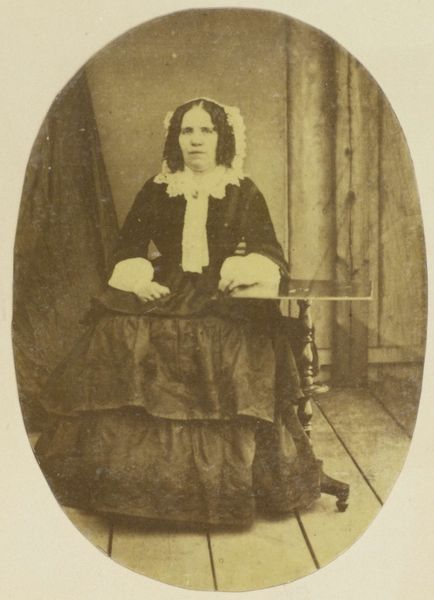
photography, gelatin-silver-print
#
portrait
#
photography
#
historical photography
#
gelatin-silver-print
#
19th century
#
realism
Dimensions: height 270 mm, width 235 mm
Copyright: Rijks Museum: Open Domain
Curator: Here we have a piece titled "Portret van een onbekende vrouw voor een spiegel," or "Portrait of an Unknown Woman Before a Mirror," created by Louis Wegner around 1855 to 1860. It’s a gelatin silver print. What are your initial thoughts? Editor: Oh, she's lovely and spectral. Like a character plucked straight out of a Victorian novel about longing glances and whispered secrets. The whole scene, bathed in sepia tones, feels haunted, almost as if her spirit has lingered on the photographic plate. Curator: It's striking how photography in this era sought to emulate painting, but was still deeply rooted in its own process. The gelatin silver print method would have involved a meticulous layering of light-sensitive chemicals. It was less about instantaneous capture and more a crafted artifact. Editor: Absolutely! You can almost smell the darkroom. The mirrored image adds an intriguing dimension, doesn’t it? Another version of herself, trapped between realities or perhaps a ghostly twin... One could ponder how social expectations or internal reflection molded a young woman's image. It’s a rather somber affair for what was meant to be, fundamentally, self-promotion. Curator: Yes, this was still relatively early days for photography, think about the materials used. It really would have taken a certain commitment for someone to go to these lengths for this portrait! There’s a real intersection here between Wegner’s technical mastery and the cultural performance of portraiture, not only for elites. Editor: Makes one consider the power dynamics at play. Is the woman commissioning this portrait, or is it being commissioned of her? Was she allowed an active role? Perhaps this carefully controlled pose—hands clasped, gaze averted—were tools used to portray a ladylike respectability of the 19th century. Curator: Definitely. The very act of making this print would involve not only the labor of the photographer, but potentially assistants who helped to prepare chemicals and print on these expensive paper stocks. The circulation and consumption of photography adds dimension to 19th century materialism. Editor: You've brought to life just how much goes into capturing a moment like this. This seemingly simple image becomes a gateway to the past, to the silent lives of individuals we will never truly know. Her face, though unknown to us, tells such a detailed story! Curator: And so, with each interaction and each observation, she gets another lease of life in our consciousness.
Comments
No comments
Be the first to comment and join the conversation on the ultimate creative platform.
